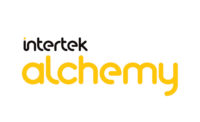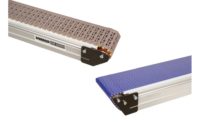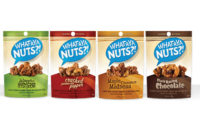![]()
Go Mexico!
by Renee M. Covino
Want to really capture that growing Hispanic market?
Surround them with sweet treats that remind them of—and come
from—home.
Confectionery imports from
Mexico have increased significantly—to over $103 million dollars
annually, according to the National Confectioners Association. Many Mexican
candy companies are currently growing sales at over 30 percent a year.
American retailers who haven’t considered these
candy sources, not just for branded Hispanic treats, but also for private label
goodies, are at a disadvantage in targeting their growing Latin consumer population.
Here are just a few Mexican candy companies that are coming on strong in the U.S. marketplace for consideration.
Here are just a few Mexican candy companies that are coming on strong in the U.S. marketplace for consideration.
DULCES BENY, S.A. de C.V.
Tonala, Mexico
With 45 years of experience producing and exporting
candy under its belt, Dulces Beny plans now to sweeten the Latin U.S.
market with its marshmallows (with and without chocolate), chewing gum, and
hard candy lollipops. The company, which is stressing high-quality products
in specifically targeted Hispanic communities, is being met with an
excellent response, according to Carlos Zamora, export manager of Dulces
Beny.
CUANDA, S.A. de C.V.
Mexico City, Mexico (soon
moving to Juventino Rosas, Guanajuato, Mexico)
Since 1981, Cuanda has specialized in the panning sugar
process and in gelatin gummies in its homeland Mexico. Last year, the
company started addressing the U.S. Hispanic market with spicy candies and
other sweets the growing ethnic market is “homesick” for,
according to Adrian Moran, executive director of the Mexico City-based
candy company.
Moran says the company is reaching out to the American
market in two ways: with its own brands through a Los Angeles-based broker,
and with private label for Alegro International (Sonric’s), a PepsiCo
division.
Just what makes Cuanda candies so special? “We
produce panning-process lollipops with chewing gum centers and layers of
colors and flavors that we think can match in any market because they have
very interesting play value,” says Moran. “We also produce
gelatin gummies—we can make any shape that a private label could wish
for like comic characters or movie heroes, etc.”
DULCES DE LA ROSA
Guadalajara, Mexico
In business since 1948, De la Rosa’s roots were
in manufacturing peanuts and peanut-related confections. “As our
operation grew, we penetrated the marshmallow, tamarind, chocolate,
lollipops, gum, hard candies, fruit chews, and cookies/wafers
categories,” says Armando Crespo, managing partner, exports. Now the
company is proud of its “leadership position” in the following
Mexican confectionery markets: marzapan (a peanut and sugar candy),
marshmallows (with over 12 different SKUs and Latin America’s largest
manufacturing capacity), tamarind and chile bars (with the popular brand
name Pulparindo), and bubble gum pops.
De la Rosa has been marketing products in the United
States for over seven years, however, such efforts were basically conducted
by major importers and distributors in key demographic regions.
“In the past two years we’ve made inroads
selling our products directly and the success has been immediate,”
maintains Crespo. “Our volume has grown 38.3 percent in 2003 vs.
2002, and year-to-date (January-September), our tonnage is up by 32 percent
vs. the same period in 2003.
The company is currently very strong in the
“independent Hispanic trade and the dollar store distribution
channels,” according to Crespo. “Our target
market—Mexican Hispanics—purchase candy in the dollar
stores,” he explains. De la Rosa is already selling in many of the
top dollar chains, and is gaining a presence in drugstores such as
Walgreen’s, supermarkets such as H.E.B. and wholesale clubs like
Costco.
De la Rosa currently has six successful brand names in
the United States. It has also established several private label
arrangements in Puerto Rico and is currently working with two major
supermarket chains in Texas and New Jersey for a store brand marshmallow
business.
In 2005, the company plans to launch three new
products: bubble gum cherry lollipops in a 12-ounce bag, square
“mega” bubble gum pieces in a 12-ounce bag, and most
importantly, according to Crespo—cocktail peanuts with spicy and
regular flavorings.
ALEGRO INTERNACIONAL
(Sabritas S. de R.L. de
C.V.)
Mexico, D.F.
For the past 20 years, Alegro has been making candy for
kids in Mexico. Three years ago, the company hit the U.S. market with
brands such as Rockaleta, the number one lollipop in Mexico, according to
Roberto Gonzalez, U.S./Sales manager for Alegro. “Most of our
candies, such as Rockaleta, are intended for the Hipanic market; on the
other hand, our private label targets everyone with items such as bubble
gum,” he says.
Alegro is mostly targeting supermarkets, “cash
and carry” stores and dollar stores in the U.S. “Those are the
main places where Hispanics buy candy,” says Gonzalez.
In the near future, the company is planning to unveil
even “more fun, quality” candies, according to Gonzalez.
“The direction of the market is moving to a more competitive
scenario, with more candy companies coming from overseas,” he says.
“We plan to be right in there as a leading Mexican candy
company.” n
CANEL’S S.A. de C.V.San Luis Potosi, Mexico
Mexico-based Canel’s is a chewing gum and candy
manufacturer with more than 75 years of experience in the confectionery
business; it also has some very big American plans: "Canel’s is
looking to be present in every store candy set in the United States,"
maintains Emyre Barrios, exports general manager.
Canel’s specializes in manufacturing
confectionery products such as: sugar-coated chewing gum and bubble gum,
non-coated chewing gum and bubble gum, sugar-free chewing gum and bubble
gum, hard and soft candy, lollipops, marshmallows, jellies, caramel milk
lollipops and candy, cough drops, and more. The company already
manufactures confectionery products under private labels for highly
recognized candy companies around the world, according to Barrios.
During the last few years, Canel’s has been
adapting its presentations "to meet the diverse merchandising needs of
the different distribution channels," says Barrios.
Canel’s is hardly new to the United States.
Back in the 1970s, the company’s confections were imported to
this country and distributed by Mexican candy wholesalers to highly
Hispanic areas. Then in 1989, Canel’s established Canel’s USA,
based in San Antonio, Texas, "in order to strengthen the distribution
and sales of our line in the USA market," says Barrios. To consolidate
its position in key marketing areas, the company later opened two sales
offices in Los Angeles and Chicago. Additionally, it has established a
network of brokers and merchandisers.
Today, Canel’s continues to distribute its
products directly from its distribution centers to its customers:
wholesalers, major supermarkets, convenience stores and dollar stores.
"Our market share is growing every year and our brand is becoming more
and more recognized by American consumers," maintains Barrios.
"As a matter of fact, we are the only Hispanic chewing gum sold in
some major U.S. supermarket chains, c-stores and dollar stores in their
regular candy and gum sections."
Canel’s brands include chewing gum and candy
under the Canel’s name, as well as La Vaquita, a milk caramel candy.



